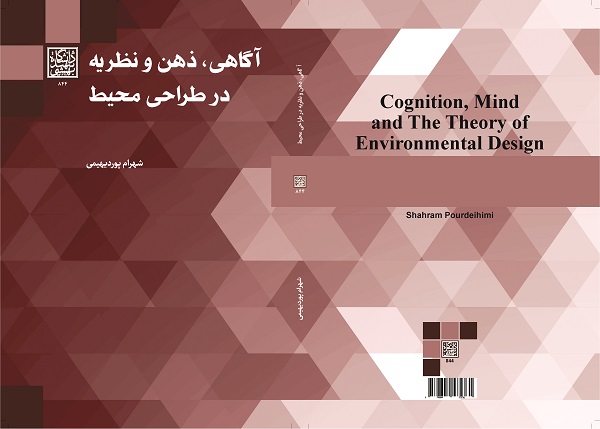
The book "Cognition, Mind and the Theory of Environmental Design" authored by Shahram Pourdeihimi, professor of the Faculty of Architecture and Urban Planning of Shahid Beheshti University (SBU) has been published recently by SBU Press in 230 pages.
Human cognition of the outside world emerges through his/her intra-mental world. The processes of feeling, perception and emergence of meaning are complex issues that are related to personal and cultural experiences, as well as human mental ability. Thinking in design is the delicate art of confronting the intra-mental world of the human. In fact, designers try to present a report of their encounter with the world they have perceived by interpreting and understanding the received information. From a scientific point of view, the processes related to cognition and understanding are formed in the nerve cells of the brain, and all human life is the result of these processes at the micro level of the brain.
In addition to evaluating and analyzing the messages of humans in interacting with the environment and other humans, the theory of design gives priority to epistemology and analyzes not only the physical information but also the mental needs of the users about the subjects in the design. This approach to the issues raises the importance of methods of gathering information about the mental needs of users, and it is obvious that achieving this goal will be possible by using phenomenological analysis.
Mental cognition about subjects usually changes under the influence of scientific findings in each era. In fact, it is the mental cognition of a person that creates changes in the mind, not his/her efforts. Mental cognition is dependent on the information in the human mind in every historical period. Here the goal is not to create a different world, but rather the issue is the changes in human mental information and as a result the emergence of a different human being. Knowing the mental rules of the users, the mind of the designers creates a structure that naturally manifests knowledge in the mind. Therefore, architects are not only interpreters and analysts of information, but in order to build a theory, a complete and comprehensive understanding of the issues must be created in their minds, in such a way that the phenomenological analysis of any issue in design is effective in understanding the behavior of users in the environment through familiarity with the mental world of users, etc.
In the present book, the author has dealt with the narrative of life and theories of design, human, mind, perception, etc. in five chapters according to what was mentioned.


